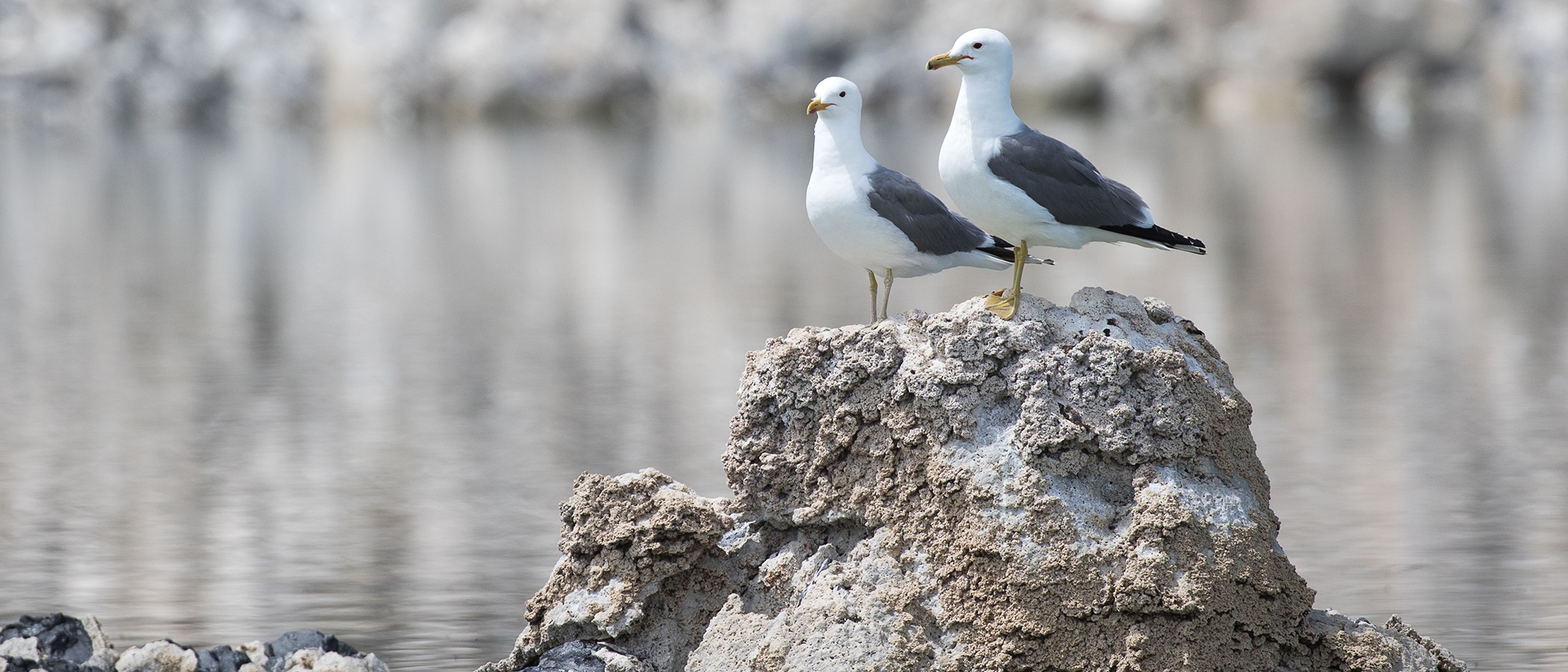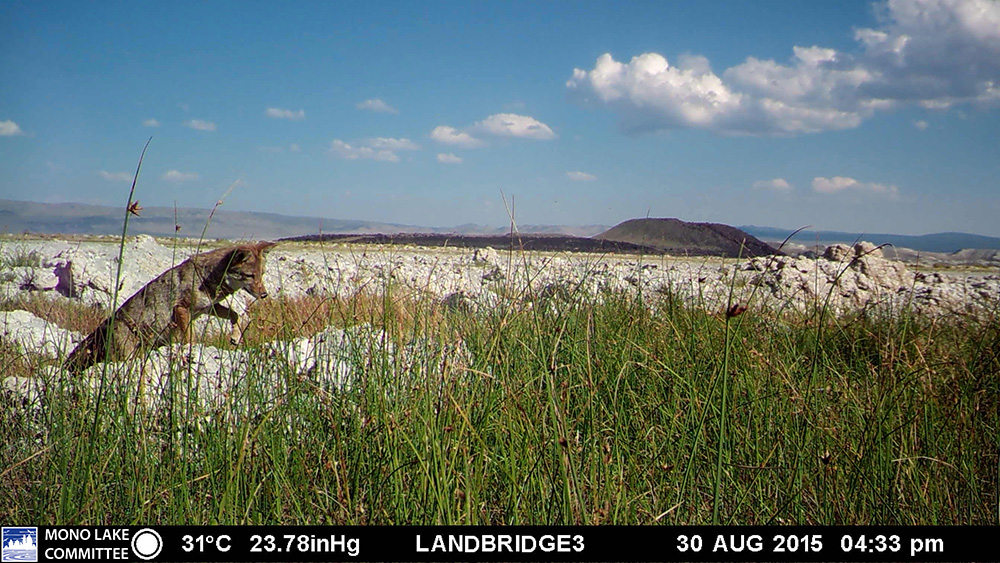
As the winter of 2015–16 unfolds in the Mono Basin, those of us lucky enough to live here are enjoying tracking every storm and taking the measure of El Niño’s effects. After years of drought, many Mono Lake issues are critically affected by the size of this winter’s snowpack.
But we can’t wait until the final snowflake has fallen to plan for 2016. This is especially true for the protection of the California Gulls that nest on Negit Island and surrounding islets, because the magnitude of the winter will directly determine how safe the nesting ground is this year.

California’s four-year drought has lowered Mono Lake more than five feet, causing the re-emergence of a substantial portion of the landbridge that connected the north shore to the gull nesting grounds in the 1980s and 1990s. A modest protective moat of water kept the gulls safe through the 2015 nesting season.
Now we’re looking closely at what 2016 might bring. In the fall, Mono Lake Committee analysis showed that a wet winter would result in lake levels that improve the natural protection the lake offers one the nation’s largest California Gull rookeries. But a dry winter would expose an easy pathway for coyotes to reach and prey on the ground-nesting gulls, reigniting a major public concern not seen since the 1990s.
Planning for the worst, hoping for the best
In November Committee staff met with the lead Mono Lake gull researcher and a team from California State Parks, the agency with the dubious honor of being in charge of the landbridge as it emerges from beneath Mono Lake. The group’s task was straightforward: consider reasonable steps that—if needed—could be taken to protect the gull nesting grounds from coyote predation.
The focus was on temporary measures that would deter coyotes from exploring the landbridge and discovering the gull rookery, potentially for one or two years. With the aid of satellite photos and wildlife camera observations, the group discussed various options and settled on a tentative plan to deploy a temporary electric fence similar to the affordable, low impact varieties used on local ranches.
When to take action
The winter snowpack will determine if a temporary fence is needed. The catch is that by the time we know the final size of the snowpack it will be too late to start planning and permitting a fence. So determining if and when to jump into action is critical. No one wants to see the colony suffer, and no one wants to build a fence that would be unnecessary if Mono Lake is going to rise, either.
To tackle this conundrum, Committee staff modeled multiple scenarios to guide decisions on how to proceed months in advance of winter ending. We used hypothetical snowpack scenarios ranging from dry winters to very wet and put them into the Mono Lake model to see the projected lake level results across 2016. We then looked to see which scenarios produced lake levels that preserved or enhanced the natural watery protection the lake provides the gulls—and which did not.
In the end this analysis has given us specific numbers to use to evaluate the snowpack in February and March to determine if gull protection plans need to be put into on-the-ground action.
So far so good
The Mono Basin snowpack measured 90% of average on February 1. That’s pretty good news. Our lake level modeling work indicates a low chance of needing to construct a temporary fence this year to protect the nesting gulls.
However, the 90% measurement just barely triggers the “low risk” conclusion, and if the winter takes a drier turn then action would still be needed. As a result, we will continue work on the planning items with long lead times while we await the March and April snowpack measurements to make any final decisions.
This post was also published as an article in the Winter & Spring 2016 Mono Lake Newsletter (page 6). Top photo courtesy of Point Blue Conservation Science.

[…] Keeping an eye on Mono Lake's California gulls: “As the winter of 2015–16 unfolds in the Mono Basin, those of us lucky enough to live here are enjoying tracking every storm and taking the measure of El Niño’s effects. After years of drought, many Mono Lake issues are critically affected by the size of this winter’s snowpack. But we can’t wait until the final snowflake has fallen to plan for 2016. This is especially true for the protection of the California Gulls that nest on Negit Island and surrounding islets, because the magnitude of the winter will directly determine how safe the nesting ground is this year. … ” Read more from the Mono Logue here: Keeping an eye on Mono Lake’s California gulls […]